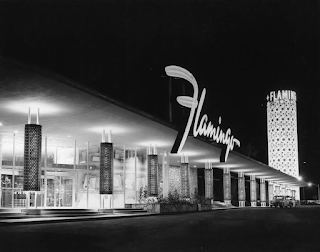The Elizabethan Age begins (1558)
... the start of the last 45 years of the House of Tudor rule from 1485 - 1603 (Henry VII and VIII, Edward VI, Mary I, Elizabeth II).
I am certainly no expert on the history of Britain or Kings and Queens or any of that, but reading about it sure does inspire various type of thoughts, including:
- can you believe this shit?!
- why so much incest and deal-making and arranged marriages in European royal families?
- these people are absolute barbarians
- I cannot believe how entwined the Pope was with local Kings and Queens
- so that’s why the Pilgrims came to America in 1620
- plus many more
Start with the Tudor period and go from there ... that’s what I did, and hoo boy ...
 |
| Henry VIII |
The decades after Martin Luther nailed his 95 Theses to the church door in 1519 were extremely tumultuous and that combined with the whimsical cult-of-personality authoritarian government in England (and throughout Europe) led to a battle over the doctrine of the new Church of England — created at the whim of Henry VIII over an annulment he wanted but could not have — that see-sawed back and forth from one King or Queen to the next, Catholic doctrine under this one, Protestant under that one.
Worship the wrong doctrine? Punishable by death.
It’s impossible to overstate how chaotic, violent, and out of control it was for the next nearly 200 years. Wikipedia says this about that period known as the English Reformation.
The Reformation transformed English religion during the Tudor period. The five sovereigns, Henry VII, Henry VIII, Edward VI, Mary I, and Elizabeth I had entirely different approaches, with Henry VIII replacing the pope as the head of the Church of England but maintaining Catholic doctrines, Edward imposing a very strict Protestantism, Mary attempting to reinstate Catholicism, and Elizabeth arriving at a compromise position that defined the not-quite-Protestant Church of England. It began with the insistent demands of Henry VIII for an annulment of his marriage that Pope Clement VII refused to grant.
About that annulment for Henry VIII, we should note two things: (1) as King, he was obsessed with producing an heir to the throne, and (2) his marriage to Catherine — his brother Arthur’s widow — in 1509 lasted nearly 24 years in total and resulted in four stillborn children, one son Henry who died aged just 7 weeks, and a daughter Mary (who later became Queen in 1553).
The Pope refused, of course, and the pursuit of this annulment dragged on for a few years until 1532, by which time Henry had kicked Catherine to the curb and installed Anne Boleyne (an assistant to Catherine, and whose sister Mary he had been having an affair with). Anne bore him a daughter Elizabeth in 1533 (the Queen Elizabeth noted above) but no sons and so of course was beheaded in 1536 for incest and treason. So he married Jane Seymour, who had been a lady-in-waiting for Queen Anne, in 1837. She did bear the son he had been waiting for, Edward, who became King at age 9 upon his father’s death and only lived until age 15.
In essence he decided to uproot the entire English religious structure and induce violence and chaos for the next 200 years by breaking completely away from the Pope and starting a new Church of England, with doctrine (and laws) that switched with the whims of whoever happened to be sovereign leader at the time... all because Henry and Catherine never produced a male heir to the throne. When Henry’s third bride finally did produce a male heir, Edward, he only lived until age 15.
You can easily see why the Pilgrims were motivated to get the hell out of there.
Henry VIII basically charted a new course for England from a Catholic country under the Vatican’s thumb to a Protestant and independent one with more power and revenue (plus an extremely powerful Royal Navy, also his idea). As it says in this longer article all about the English Reformation:
The break with Rome gave Henry VIII power to administer the English Church, tax it, appoint its officials, and control its laws.
This is exactly what eventually drove the movement that became the American Revolution.
The Tudor period is noteworthy for many other well-known figures and events from history, including William Shakespeare and the rise of the Royal Navy (under Henry VIII) which led to the British Empire stretching across the planet over the next 400 years.



























